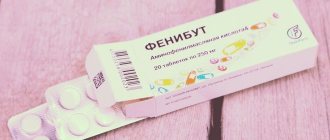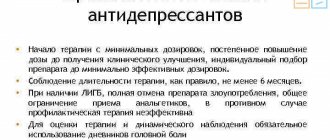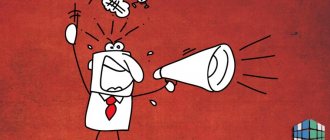A disease in which a person systematically experiences panic attacks (vegetative crisis) is called panic neurosis. Panic neurosis develops against the background of constant psycho-emotional stress, which subsequently leads to depletion of the reserves of the nervous system and, as a consequence, to panic attacks.
If you once experienced a feeling of irresistible spontaneous panic, then this is not a sufficient reason to talk about panic neurosis. However, if panic, inexplicable anxiety or a strong fear of death covers you quite often and with a certain frequency, then you need to check your nervous system for possible malfunctions in the functioning of its autonomic department.
VSD and panic attacks: causes of development, characteristic signs and methods of correction
A panic attack can be triggered by a number of diseases.
Most often they occur due to emotional overstrain and stress. Experts cannot say exactly why an attack occurs. There are a number of reasons that can cause a panic attack: heart disease, pregnancy, menopause, stress, alcohol abuse, lack of sleep, smoking, drinking large quantities of caffeine, various mental disorders, brain injuries, chronic infectious diseases, physical stress.
Panic attacks occur in a patient not at the moment when he is afraid, but in a normal state. The patient cannot understand why this is happening and begins to worry and worry, and this can lead to a repeat attack. Panic attacks can be inherited. Diseases in the thyroid gland can provoke an attack.
Taking medications for a panic attack that are used for neuralgia can provoke an attack. The patient begins to feel anxious, this is a side effect. The attack may be due to prolonged depression.
Vegetovascular problems can arise under the influence of many factors. Psychological trauma can provoke such disorders:
- family quarrel, divorce;
- conflicts or problems at work;
- prolonged stressful situation leading to nervous tension;
- loss of a loved one.
- Chronic diseases of the endocrine system, heart disease, and blood pressure play a major role in the appearance and development of panic attacks.
- Autonomic disorders can also be caused by hormonal imbalances during pregnancy and childbirth, during puberty or the onset of menopause in women.
- It is not uncommon for panic attacks to occur during VSD after a cold or surgery.
Experts note that a large percentage of PA in vegetative-vascular dystonia occurs against the background of a hereditary predisposition.
External factors also play an important role. Often panic attacks are a consequence of:
- long-term intoxication of the body with alcoholic beverages;
- sudden change in climatic conditions;
- drug poisoning;
- prolonged exposure to the sun;
- increased physical and mental stress.
People with hypersensitivity are mainly susceptible to this disease. The presence of an internal conflict in an individual, fears, unfulfilled desires, and the inability to express one’s emotions most often underlie the appearance of autonomic failures.
Vegetative-vascular dystonia includes various functional disorders accompanied by dysregulation of vascular tone in the autonomic nervous system. Currently, VSD and panic attacks are not classified as a separate disease, but are included in a complex of symptoms that develop against the background of individual pathologies.
Treatment
Panic attacks do not go away on their own. The fear of their repetition necessarily provokes a new attack. Therefore, you need to consult a doctor and find out how panic attacks are treated . The most effective in this case is drug therapy . Based on the results of the tests and examinations performed, the doctor will decide which drug to prescribe to you and in what dosage. Most often these are medications that relieve excessive anxiety, tearfulness, tension, fearfulness and anxiety.
To restore sleep, they often resort to herbal medicines - tinctures of valerian, motherwort, chamomile, sweet clover, and oregano.
Treatment of a panic attack must be combined with a special diet. Eliminate alcoholic beverages, smoked foods, fish, cheese, sauerkraut and legumes from your diet.
Drug therapy is supplemented with breathing exercises. During sessions, patients must learn to breathe correctly, concentrate on this process, feel and imagine how the body is saturated with oxygen. This technique will help, in the event of a repeated attack, to normalize rapid breathing and distract from emotional manifestations - anxiety, fear, restlessness.
Normalize your daily routine - go to bed on time, don’t stay up late, eat right, exercise, take walks in the fresh air.
Symptoms
First of all, you need to figure out what the symptoms are. There are both physical and mental. The former manifest themselves in the human body, and the latter arise in the brain. The mental symptoms occur as follows. The patient begins to feel danger and fear, is afraid that he will die, and this goes into the stage that he is afraid of getting sick with something serious. May feel like she is going to have a stroke or heart attack.
Such symptoms can be different; sometimes the attack occurs vividly. But in some cases it can happen without emotion. Panic attacks can occur several times a week or a month.
Physical symptoms include the following:
- the patient feels his heart beating strongly; this is due to the strong release of adrenaline into the blood;
- throws into heat or cold this occurs due to the fact that vascular tone decreases;
- rapid breathing;
- the mouth feels dry; the autonomic nervous system is to blame;
- increased sweating;
- diarrhea or constipation;
- cold extremities;
- nausea, vomiting, discomfort in the upper abdomen;
- trembling throughout the body;
- dizzy;
- severe weakness.
You can stay in this state for up to 30 minutes when experiencing the listed symptoms. A panic attack may result in excessive urination and nausea. After all this, a person feels tired and depressed. You don’t have to worry if the attack went away after 15 minutes; it was most likely due to stress.
Syndropanic attack manifests itself with a wide range of symptoms. Conventionally, the symptoms of a panic attack can be divided into physical and mental. They can appear both during the day and at night. It is believed that people with strong willpower are more susceptible to night attacks. Thus, while controlling their fear and emotions during the day, they experience panic attacks at night.
Prognosis and prevention
The prognosis for the treatment of anxiety-panic disorder is positive, especially if you consult a doctor in a timely manner. By regularly visiting a psychotherapist and taking the drug correctly, it is possible to eliminate anxiety symptoms and reduce the likelihood of new attacks.
If you do not contact a psychotherapist and do not eliminate the problem that led to the disease, there is a risk of relapse, which increases if the patient experiences a stressful situation in life. If panic attacks are left untreated, there is a risk that they may develop into phobias; phobic disorder is also treated by a psychotherapist.
To prevent panic attacks, you should lead a healthy lifestyle: eat right, avoid bad habits, and sleep well. Physical activity helps relieve stress. Yoga, meditation, breathing practices help relieve stress and relax. It is worth limiting your intake of stimulants such as caffeine and nicotine.
Related posts:
- Anonymity in psychiatry Psychiatry is a branch of medicine whose activities are aimed at studying the causes...
- Features of the course of schizophrenia in older people Schizophrenia is a mysterious, terrible disease. In the minds of the general public...
- The body's response to the cause of acute stress Acute stress reaction is a transient disorder of significant severity that...
- Causes of Depression in Children Depression is a mental illness marked by persistent feelings of sadness, irritability, loss...
Panic attack, what to do when the attack starts
Vegetovascular dystonia is not a disease in the literal sense. This is a symptom complex that includes signs of psychogenic disorders caused by dysfunction of the autonomic system. Treatment of VSD and panic attacks that appear against its background consists of drug therapy and psychological assistance. Such patients are prescribed antidepressants, selected individually.
A sudden attack of inexplicable fear and anxiety that is not related to real events is called a panic attack. Its manifestations are accompanied, in addition to mental ones, by a variety of autonomic disorders.
During an attack, blood pressure and pulse rate increase, hand tremors and hot flashes appear.
For treatment, the most effective methods are psychotherapy in combination with non-drug medications, nutritional and lifestyle correction.
There are several signs by which you can understand that a person is having a panic attack. An attack can occur several times a month and the patient is constantly afraid that it will occur again, which is what provokes it. During a panic attack, the patient has a fear of dying or getting something serious.
The patient begins to feel his heart jumping out of his chest. It becomes difficult for him to breathe and trembling in his limbs. You feel suffocated, feel very dizzy and feel nauseous. The patient thinks that he will lose consciousness and die. There may be numbness in the extremities and a sharp fever.
If before a panic attack you feel that it will come soon, then you need to try with all your might to distract yourself. You can try to start counting how many people are without a hat on the bus and so on. Singing also helps to cope with an attack; you need to hum your favorite music to yourself. You can try to do breathing exercises: take a deep breath and exhale slowly.
Exercise can relieve cramps and help you relax and calm down. A contrast shower gives a good result in avoiding a panic attack. As soon as you feel that an attack is about to begin, you need to douse yourself every thirty seconds with cold and warm water. This will help trigger a hormonal response and this will eliminate fear and anxiety.
Attacks may occur due to constant fatigue, so you need to rest more often. You can take a hot bath and add special relaxing oils. It would be best to get enough sleep and combine work with rest. If you adhere to the correct daily routine, you can completely get rid of panic attacks.
Each time a person expects the next attack and he has constant fear. After all, it will be difficult for any patient to be in such a state. If a person constantly thinks about it and is afraid, then he will have attacks more often. If medication for panic attacks is not prescribed, this can lead to hypochondria. Then the patient will constantly look for new symptoms and diseases.
If a panic attack started on the plane, then you shouldn’t be too nervous. You need to relax and transfer your thoughts to something else. You can turn on calm music and hum it in your head. Seizures can often occur in the expectant mother.
During an attack, blood pressure and pulse rate increase, hand tremors and hot flashes appear.
For treatment, the most effective methods are psychotherapy in combination with non-drug medications, nutritional and lifestyle correction.
Risk groups: forewarned - forearmed
Panic neurosis is provoked by difficult family relationships, persistent conflicts, responsible work, and overload. Medical practice shows that the age of nervous disease has become significantly younger. Today, even school-age children, who are required to master a rich, complex program, are susceptible to panic. A huge amount of homework, the inability to get relief, high expectations from teachers and relatives are factors that make a child nervous. The result is an acquired disease that requires proper treatment.
Among the adult population, nervous disorders are not selected based on gender. Men and women are equally likely to get sick, but people experiencing difficult life situations are more vulnerable. Doctors advise: think positively, perceive failures less painfully, engage in creativity, hobbies, go for walks, attend cultural events. Then the mental neurosis will recede, the mood will rise, and the general condition will improve. Also recently, treatment of panic attacks with folk remedies .











